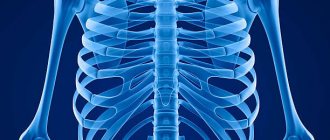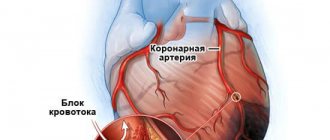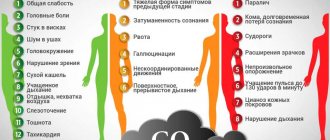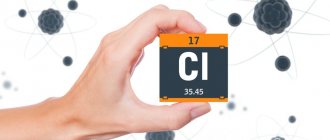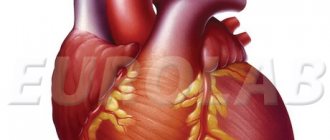In the process of maintenance, repair or testing of electrical installations and electrical networks of industrial enterprises, there is a possibility of a person coming under voltage, that is, touching a point in an electrical installation with a potential different from the ground potential, or two points with different potentials. Therefore, issues of electrical safety at work are becoming very relevant, since work on electrical networks and electrified equipment is carried out by workers of various professions, not only electrical ones. The harmful and dangerous effects of electric current, electric arc and electromagnetic fields on operating personnel of enterprises manifest themselves in the form of electrical injuries and occupational diseases.
Before contact with live parts of structures, electric current does not affect the senses. When touched, an electrical current passing through the human body can cause thermal, electrical or biological effects on the body. Thermal effects are characterized by heating of tissues, up to electrical burns. Electrical effects contribute to the decomposition of fluids and blood in the human body, while biological effects are accompanied by the destruction and stimulation of tissues and muscle contraction.
Electrical injury: first aid
Electrical injury to a person occurs as a result of direct contact with a current source. This kind of damage can mean a minor electric shock, which can be obtained, for example, as a result of contact with a radio socket, or a serious injury, which is possible when struck, for example, by lightning. First aid for an electrical injury is necessary for the victim in any case, and it is important to take into account that with such a lesion there is an impact on the central nervous system, due to which the prognosis regarding the general condition of the victim and the complications relevant to him is subsequently determined.
Three types of electrical injuries
- Local, with the appearance of local burns and damage;
- General, with damage to vital human organs (this type of damage is called electric shock);
- Mixed.
Local electrical injuries are characterized by the following lesions: metallization of the skin, the appearance of current signs, mechanical damage and electroophthalmia (damage to the outer membranes of the eyes as a result of exposure to ultraviolet radiation or electric arc welding). General electrical injuries are the result of an electrical shock that excites living tissue to the point of convulsions.
Electrical injuries: severity of injuries
The severity level determined for the lesion in each specific case depends on factors such as:
- current strength - in this case, the higher the level of the impact indicator, the correspondingly more serious the damage received by the victim;
- duration of exposure - based on the factor of impact on the victim’s body, the severity and seriousness of its consequences is determined;
- degree of resistance - this factor is mainly determined by the characteristics of the skin type and its general condition at the time of electric shock. Thus, dry and thick skin is characterized by greater resistance to such exposure, as well as lower susceptibility to the effects of current. If we are talking about wet and thin skin, then its resistance to the current acting on it is much lower.
Electrical injuries: types and symptoms
Medical practice determines a specific classification, each of the points of which is based on the degree of damage when exposed to electric current:
- I degree. As a result of electric shock, the victim experiences clonic muscle spasms, while he remains conscious. The degree of damage in question is characterized by the appearance of fear, pre-fainting/fainting, severe fatigue and weakness in the victim. As a rule, all manifestations of this degree of damage pass quickly, first aid for electrical injury is practically not required, and there is, accordingly, no need for treatment and subsequent hospitalization.
- II degree. Electrical trauma of this type leads to loss of consciousness of the victim, again clonic muscle spasms are noted, respiratory and cardiac activity is not affected, their functionality is within normal limits.
- III degree. The victim may experience loss of consciousness; in addition, convulsions may occur. Respiratory and cardiac activity are subject to certain disturbances.
- IV degree. Features of electric shock to this extent lead to clinical death. As a rule, it is advisable to talk about the relevance of this type of electrical injury when the applied current is 100 mA or more.
Electrical injury
At the time of injury, the victim may feel a jolt, a burning blow, or a muscle spasm. After the current stops, symptoms from the central nervous system prevail. General weakness, loss or clouding of consciousness is possible. Signs of electrical injury often resemble the clinical picture of a concussion. Headache and dizziness occur, the patient is lethargic, lethargic, indifferent to his surroundings. Less commonly, electrical trauma causes agitation, redness of the skin, and restlessness.
From the cardiovascular system, there is first an increase and then a decrease in blood pressure, increased heart rate and arrhythmias. Enlargement of the borders of the heart is often detected. Moist rales appear in the lungs, and signs of emphysema are found on a chest x-ray. A cough is possible, and in some cases (especially with pre-existing pulmonary pathology) there are signs of acute respiratory failure. Some patients with electrical injuries experience diarrhea, nausea, and vomiting.
Electrical burns (current marks) are usually formed at the places where current enters and exits, but the absence of such damage is not a reason to exclude electrical injury, since 20-40% of victims do not have such marks. Electrical trauma can cause burns of varying severity:
- 1st degree – small foci of coagulation of the epidermis without the formation of blisters;
- 2nd degree – total damage to the epidermis with the formation of blisters;
- 3rd degree – damage to the entire thickness of the skin, including the dermis, with the development of superficial necrosis;
- 4th degree – damage not only to the skin, but also to the underlying tissues (fiber, muscles, etc.) with the development of deep necrosis.
Deep burns (3rd and 4th degrees) due to electrical trauma are more common than superficial burns. In severe cases, destruction of large areas of tissue is possible, including charring of the limbs. In this case, the border of the skin lesion is often located distal to the border of muscle destruction - under the apparently unchanged skin of the proximal parts of the limb, when cut, bloodless, dull, dead muscle tissue is found, resembling boiled meat in appearance.
In some cases, severe muscle spasm during electrical trauma causes the development of severe joint contracture. Due to convulsive muscle contractions, fractures and dislocations sometimes occur. Most often, a compression fracture of the spine and a dislocated shoulder are detected. Due to thermal and mechanical damage, the bone in the area where the current loop passes becomes more fragile, therefore, after an electrical injury, the likelihood of a fracture of the affected segment (or segments) of the limb increases.
First aid for electrical injury
The definition of first aid in this case means prompt isolation of the victim from the effects of current. In particular, this requires de-energizing the wiring or, if this action is impossible, knocking it out of the victim’s hands. This must be done with any non-conducting objects, which will allow you to protect yourself.
When dragging a victim away from a power source, you need to carefully grab his clothes, excluding the possibility of contact with exposed parts of his body. If it is impossible to perform this action, rubber gloves are used; finally, you can wrap your hands using some kind of woolen product. To avoid personal injury, it is better to stand on an insulating object (dry board, non-synthetic clothing, rubber).
Next, they proceed directly to providing first aid for electrical injury, which, as we have already determined, is required for significant lesions, that is, for damage of the III or IV degree, which can be judged by the previously listed signs. In particular, with such lesions, stimulation of cardiac activity is required, which is ensured by performing chest compressions on the victim in combination with mouth-to-mouth artificial respiration. These measures must be implemented until the victim is in a state of consciousness with the simultaneous restoration of respiratory and cardiac activity. It goes without saying that the provision of such assistance is stopped even if there are signs indicating the biological death of the person suffering from the defeat.
In case of exposure to current in the range of 1000V or more, any actions involving the provision of first aid are carried out exclusively using insulating shoes and rubber gloves. Suitable footwear in this case would be slippers, rubber boots, and sneakers with rubberized soles.
If you receive an electrical injury of degrees II-IV, the victim, after first aid provided to him, must be hospitalized without fail. This also implies the need for treatment and monitoring of his condition.
I degree, as we have already noted, is not critical, therefore, when calling an ambulance, its team will resolve on the spot the issue regarding the need for hospitalization of the victim, as well as the need for outpatient treatment.
First aid for electric shock and electrical injury
Electric shock and electrical injury: causes, symptoms and signs, first aid measures and comprehensive treatment
Electric shock is one of the most dangerous domestic and industrial accidents and is always associated with high mortality. The effect of electric current on the human body leads to strong heating of tissues and the development of burns, as well as disruption of the functioning of internal organs. First aid for an electric shock consists of stopping the effect of the electric current on the victim’s body, performing a closed heart massage and artificial respiration if the victim’s heart has stopped due to an electric shock, treating and applying a bandage to the burned areas.
Electrical injury usually occurs as a result of exposure of the tissues of the human body to high-power household electric current or a discharge of atmospheric electricity (lightning). Sources of electric shock are: faulty electrical equipment in enterprises and household electrical appliances, broken wires of high-voltage lines, non-compliance with safety regulations when working with electrical equipment. The degree of influence of electric current on the human body is determined by the voltage and current strength, the way the current passes through the body, the general health of the victim and how timely first aid was provided.
Features of electric shock and electrical injury
- Electric current, when passing through the human body, causes tissue heating and can lead to electrical burns to the skin and damage to underlying tissues and organs.
- Electrical burns occur where electrical current enters and exits and are called “current marks.”
- Electrical burns may seem minor in appearance, but in fact they are often deep with significant damage to muscles, bones and internal organs.
- Electric current can disrupt the functioning of the heart, even causing it to stop.
- A victim of an electric shock may stop breathing.
Signs and Symptoms of Electrical Shock
- Finding an exposed source of electric current near the victim;
- The victim is unconscious;
- Obvious burns on the surface of the skin;
- Breathing problems with possible respiratory arrest;
- The pulse is weak, arrhythmic or absent;
- The entrance and exit holes of the electrical charge are usually located on the hands or feet.
Due to the nature of electrical trauma, even with short-term exposure to electric current, the victim may experience respiratory and cardiac arrest. Therefore, sufficiently effective first aid for electric shocks at the scene of an accident is often a decisive factor in saving the victim.
If the following symptoms occur in a victim of an electric shock, immediately call an ambulance:
- Cardiac arrest (no pulse)
- Irregular heart rhythm (irregular pulse)
- Trouble or stop breathing (irregular breathing)
- Muscle pain or muscle contractions
- Seizures
- Tingling or numbness sensation in the limbs
- Loss of consciousness
Before the ambulance arrives, if you suffer from an electric shock, take the following measures:
Assess the situation. Do not touch the victim immediately. He may still be under electrical current. If you touch the victim, you can also get hit. If possible, turn off the power source (unscrew the plugs, turn off the switch). If this is not possible, move the current source away from you and the victim with a dry, non-conductive object (branch, wooden stick, etc.). If it is necessary to pull the victim away from the electrical wire, we must remember that the human body through which the current has passed conducts the current in the same way as the electrical wire. Therefore, you should not touch open parts of the victim’s body with your bare hands; you can only touch dry parts of his clothing, and it is better to wear rubber gloves or wrap your hands in dry silk cloth. After the electric current ceases, it is necessary to pay attention to the presence of signs of life (breathing and pulse in large vessels).
In the absence of signs of breathing and pulse, urgent resuscitation measures are necessary: closed heart massage and artificial ventilation (artificial respiration). Inspect exposed areas of the victim's body. Always look for two burns (where electrical current enters and exits). Place a sterile or clean cloth over the burned areas. Do not use a blanket or towel for this purpose - fibers from them may stick to the burned surface. To improve the functioning of the heart, blood flow to it should be increased. To do this, lay the victim so that his chest is slightly lower than his legs. All victims of electric shock should be hospitalized as quickly as possible.
Method of performing indirect (closed) cardiac massage: the victim is laid horizontally on a hard flat surface - the ground, floor, board (indirect cardiac massage cannot be performed on a soft surface, for example, a bed). The person providing assistance is positioned to the left of the victim, placing his palm on the victim’s chest so that the base of the palm is located at the lower end of his sternum. Another palm is placed on top of this palm, and with strong, sharp movements, fast, rhythmic pushes are made 1 time per second. Signs of recovery of cardiac activity: the appearance of a pulse, constriction of the pupils, increased blood pressure, and the appearance of a pink color of the skin.
The most effective existing methods of artificial respiration include mouth-to-mouth and mouth-to-nose methods.
Method of performing artificial respiration: the affected person is placed on his back. The victim's head is tilted back as much as possible. If necessary, empty the oral cavity of contents and removable dentures. Cover the victim's mouth and nose with a handkerchief or napkin. After this, the person providing assistance takes a deep breath, presses his lips tightly against the victim’s lips and exhales forcefully, filling the victim’s lungs. When carrying out artificial ventilation using the mouth-to-nose method, air is blown into the victim’s nasal passages. The frequency of injections should be at least 14-16 per minute. When performing chest compressions and artificial ventilation together, each air injection is performed for 20-30 compressions on the sternum.
The duration of the described resuscitation measures depends on their effectiveness, i.e. on the restoration of spontaneous breathing and cardiac activity. Cardiac massage and artificial respiration should be continued until the ambulance arrives.

